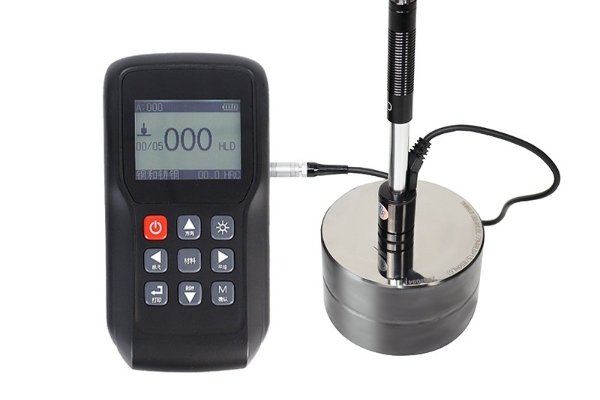Rockwell Hardness is one of the common methods of measuring the hardness of a substance. It is widely used in the quality control of engineering materials, material selection and workpiece processing. In this article, we will discuss the principle of Rockwell hardness, test methods and its importance in practical applications.
Rockwell hardness principle
Rockwell hardness is determined by embedding a standardized pyramid-shaped drill bit (steel ball or diamond) into a material and measuring the depth of further embedding. Hardness values are expressed in Rockwell hardness units (HRA, HRB or HRC), depending on the test bit used and the force applied. Rockwell hardness is calculated based on two main parameters: initial depth and embedded depth. By pressing the drill bit into the material surface at a fixed test force, the initial depth is used to determine the datum point, and the embedded depth is subsequently measured by increasing the test force. By accurately measuring the initial and embedded depths, the Rockwell hardness of the material can be calculated.

Rockwell Hardness Testing Methods
Rockwell hardness testing is usually carried out using a hardness tester, which provides a consistent test force and accurate depth measurement. During the test, the test surface is first cleaned and secured, then the test force is applied via a handwheel or motorized mechanism. Once the test force is applied, the test result (depth) is automatically displayed on the hardness tester's display. For different types of materials and hardness ranges, different drill bits and test forces can be selected. For example, when testing steel, harder materials are usually tested with diamond bits and higher test forces; whereas for softer materials, steel ball bits can be used.
Applications of Rockwell Hardness
Rockwell hardness is an important indicator widely used in materials engineering and plays an important role in the following areas:
Quality control: Rockwell hardness testing is one of the methods for rapid and accurate assessment of material hardness. By testing the hardness of materials on the production line, it is possible to ensure that the quality of the product meets certain standards and to detect any possible defects in advance of the production process.
Material selection: Rockwell hardness testing can help engineers select the right material for a particular application. Different types of materials exhibit different physical properties and wear resistance under different hardness conditions. By knowing the Rockwell hardness of a material, engineers can better select materials to meet specific engineering needs.
Workpiece Handling: Rockwell hardness testing can verify the effectiveness of workpiece handling processes. For example, during heat treatments, engineers can test the hardness to determine if the material is achieving the desired hardness characteristics. This can help determine treatment times, temperatures and treatments to ensure product quality.

Conclusion
Rockwell hardness, as a commonly used hardness testing method, plays an important role in the field of engineering materials. By testing the embedding depth of a drill bit, we can accurately assess the hardness characteristics of a material and use it effectively in engineering applications. The principle of Rockwell hardness is simple and reliable, and its testing method is mature and easy to implement. Through the application and analysis of Rockwell hardness, we can effectively control product quality, optimize material selection and validate workpiece handling processes.